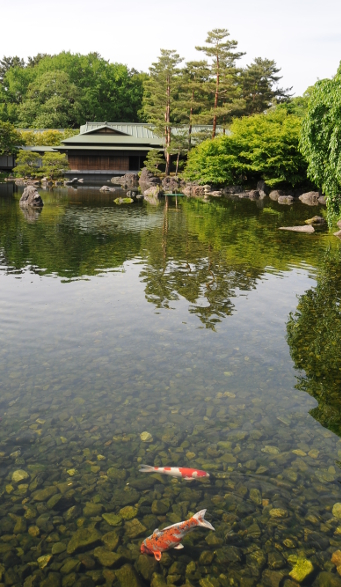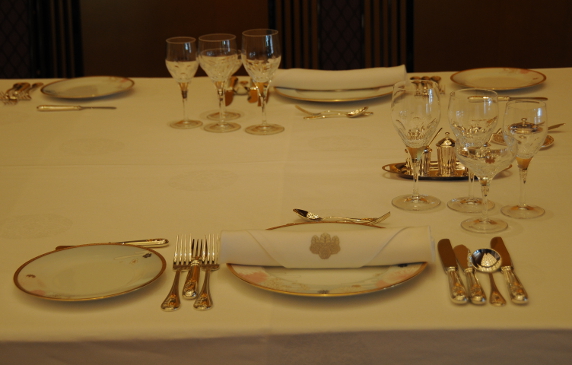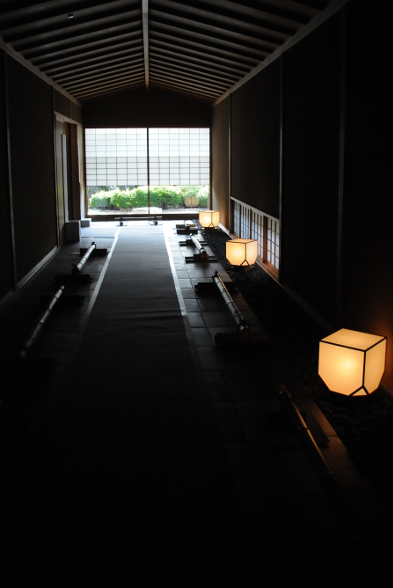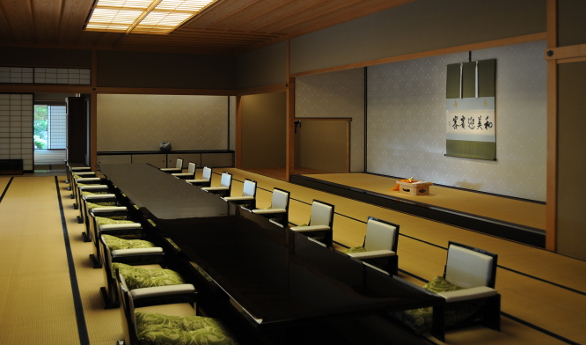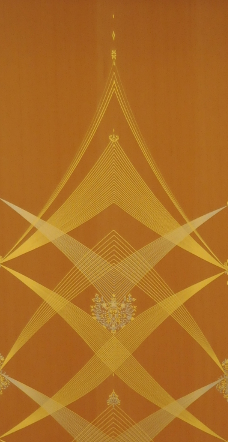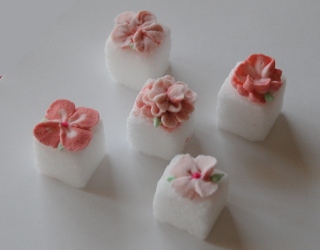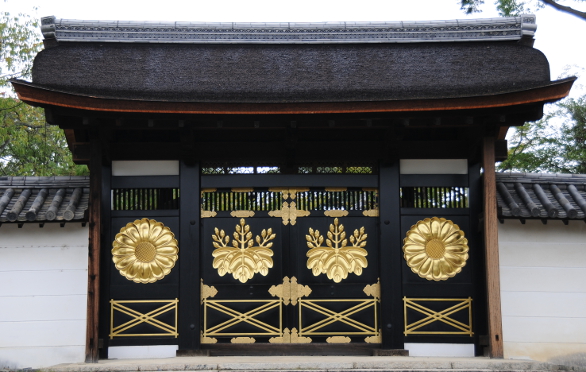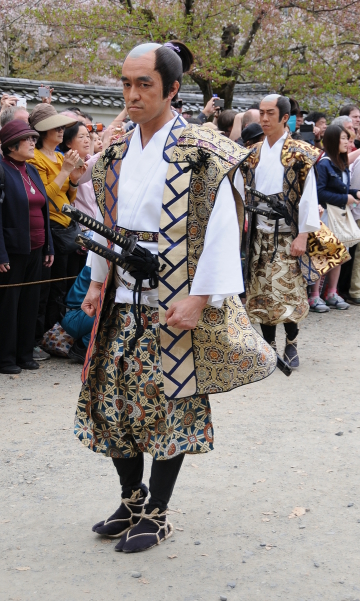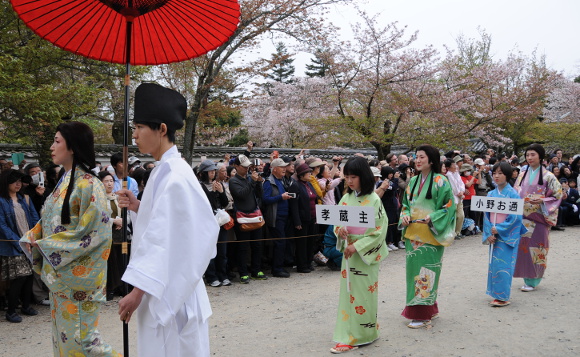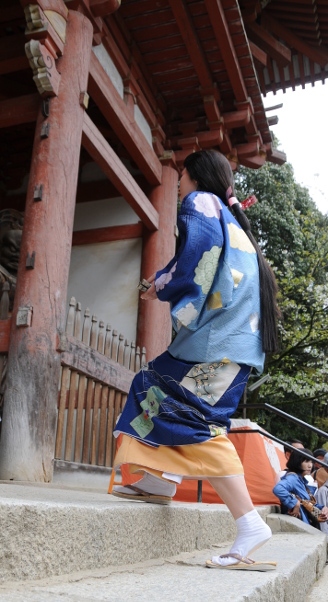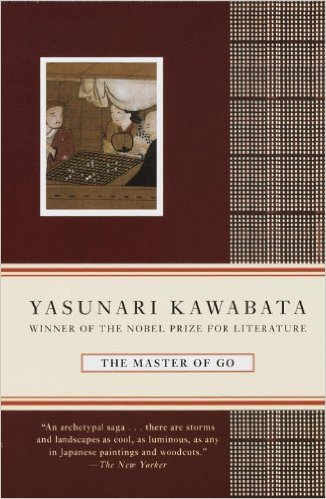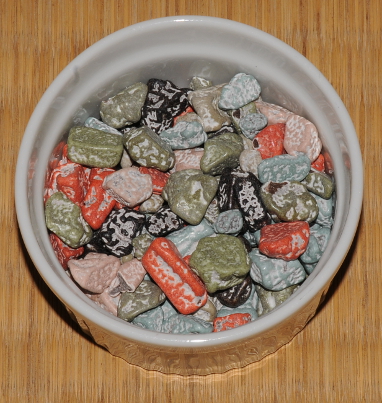Traditionally, Japanese interior uses very little furniture. On bare tatami floors, low tables and cushions are placed during the day which are replaced in the evening by futons. Most possessions are stored away behind fusuma sliding doors in large oshi-ire wall closets, or in special fireproof storage buildings called kura.
Of the few pieces of specialised storage furniture that Japanese people possessed, Tansu are probably the most beautiful ones: Large dressers made of various kinds of wood with different lacquer finish and decorated metalwork at the locks and handles of the drawers. Some old style Tansu have handles on their sides as well, so they can be easily transported by two people – either by carrying it in the usual fashion or by putting a wooden bar through the top handles which can be flipped upwards.
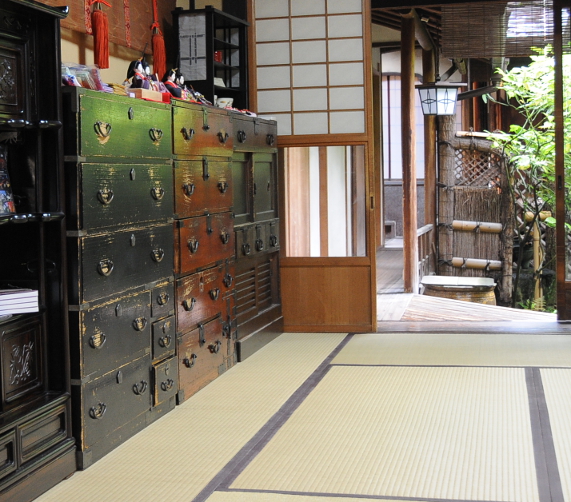 Tansu first came up in the 17th century as a means to store kimono. Until then, Japanese people had stored their clothing in baskets or wheeled trunks, if they were able to buy more than one kimono at all. Around that time however, for several reasons, general wealth increased and when people could afford to buy more clothing, baskets and trunks became too cumbersome to use. Osaka clothes merchants first started to use Tansu in their shops since they made retrieving their goods much more easy. And when – after a devastating fire in Edo (now Tokyo) – wheeled trunks were outlawed, Tansu quickly filled the void.
Tansu first came up in the 17th century as a means to store kimono. Until then, Japanese people had stored their clothing in baskets or wheeled trunks, if they were able to buy more than one kimono at all. Around that time however, for several reasons, general wealth increased and when people could afford to buy more clothing, baskets and trunks became too cumbersome to use. Osaka clothes merchants first started to use Tansu in their shops since they made retrieving their goods much more easy. And when – after a devastating fire in Edo (now Tokyo) – wheeled trunks were outlawed, Tansu quickly filled the void.
The first centre of Tansu production was Osaka, and the finished furniture was transported by ship mainly to Edo and Kyoto. By the beginning of the 18th century, demand in Edo had risen drastically, and Tansu were being manufactured there as well as in other larger cities like Kyoto or Nagoya for example. By the mid 19th century, Tansu were produced in many of the smaller castle towns to be sold locally, which eventually gave rise to many local styles and specialised types of Tansu.
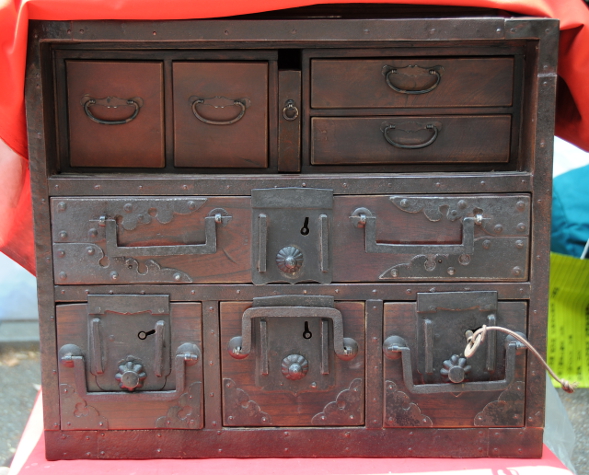 Like so many other Japanese arts and crafts, Tansu arrived from China. At first, they were just small boxes used for tea ceremony, the original Kanji meaning “something that is carried”. So-called funa dansu used by sailors as well as kakesuzuri for the use of merchants with space for writing implements, soroban and sometimes even a lamp, were still relatively small and could be carried easily.
Like so many other Japanese arts and crafts, Tansu arrived from China. At first, they were just small boxes used for tea ceremony, the original Kanji meaning “something that is carried”. So-called funa dansu used by sailors as well as kakesuzuri for the use of merchants with space for writing implements, soroban and sometimes even a lamp, were still relatively small and could be carried easily.
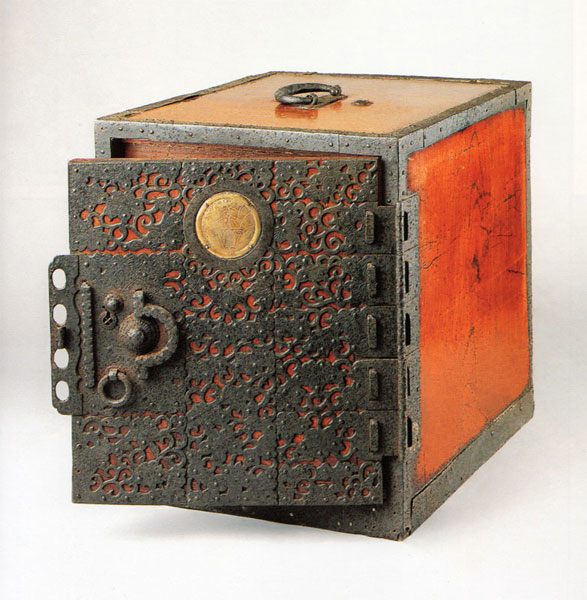 Of significantly larger size are isho dansu with several drawers to hold clothing, and they quickly became a standard part of a woman’s dowry. It was usual for a woman to bring two isho-dansu to her husband’s home; if she had more, it meant that she owned more kimono – a sign of wealth. Heya dansu were 180 cm wide and thus filled the entire space between two pillars of a Japanese room. They were as high as the sliding doors and thus covered a whole wall of a room. Other special types of Tansu are kusuri dansu, medicine chests with lots of tiny little drawers for different herbs, and kaidan dansu, which were used as staircases, always carefully hidden behind fusuma doors.
Of significantly larger size are isho dansu with several drawers to hold clothing, and they quickly became a standard part of a woman’s dowry. It was usual for a woman to bring two isho-dansu to her husband’s home; if she had more, it meant that she owned more kimono – a sign of wealth. Heya dansu were 180 cm wide and thus filled the entire space between two pillars of a Japanese room. They were as high as the sliding doors and thus covered a whole wall of a room. Other special types of Tansu are kusuri dansu, medicine chests with lots of tiny little drawers for different herbs, and kaidan dansu, which were used as staircases, always carefully hidden behind fusuma doors.
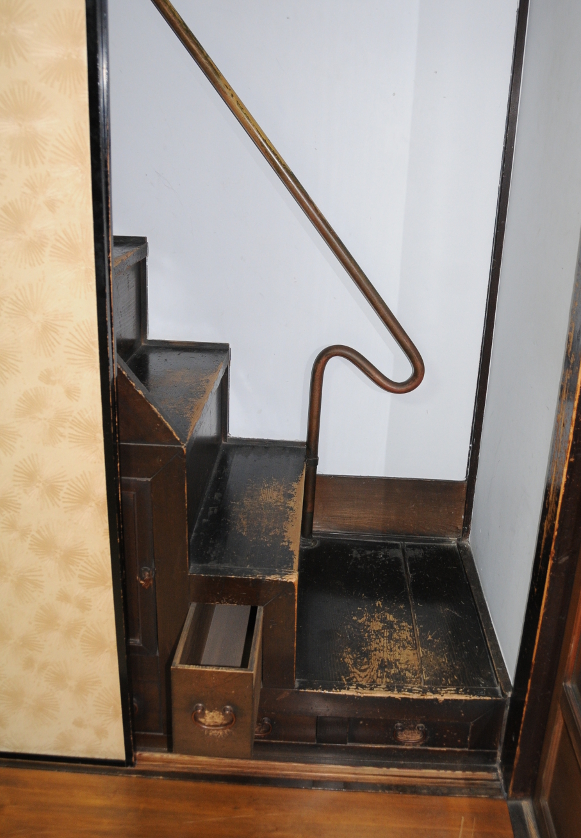 Tansu could be very elaborately made, depending on the intended owner. From the relatively simple drawer type of the middle class samurai, where the wood was polished and covered with clear lacquer, to the elaborately black lacquered double-door type showing golden crests which were used for important government documents, Tansu became a status symbol in the larger cities.
Tansu could be very elaborately made, depending on the intended owner. From the relatively simple drawer type of the middle class samurai, where the wood was polished and covered with clear lacquer, to the elaborately black lacquered double-door type showing golden crests which were used for important government documents, Tansu became a status symbol in the larger cities.
A distinctive feature of Tansu are the metal fittings on the locks and at the handles. They could be simply an indicator of the manufacturing site or individually designed for the customer with flowers, animals, or even family crests. The wood used was mostly Zelkova or Paulownia, and Tansu were made in a special way without nails that allowed the wood to expand and shrink according to the humidity of the summer or the dryness of the Japanese winter, something Western furniture is less able to do.
 As mentioned above, Tansu development reached its peak in the Meiji era when regional characteristics appeared around 1880 and lasted for some 40 years. Interestingly, the death-blow of the Tansu was the increased demand from Tokyo after the devastating 1923 Kanto earthquake. By this time, there was a distinct Tokyo Tansu, and since the city’s factories were destroyed, smaller ones from all over Japan stepped in to fill the gap – and discarded their local style for the more sombre, Western-influenced style of Tokyo. In fact, if you are buying a modern Tansu today, this style – with unlacquered, almost white wood and small black metal fittings – remains the prevalent one.
As mentioned above, Tansu development reached its peak in the Meiji era when regional characteristics appeared around 1880 and lasted for some 40 years. Interestingly, the death-blow of the Tansu was the increased demand from Tokyo after the devastating 1923 Kanto earthquake. By this time, there was a distinct Tokyo Tansu, and since the city’s factories were destroyed, smaller ones from all over Japan stepped in to fill the gap – and discarded their local style for the more sombre, Western-influenced style of Tokyo. In fact, if you are buying a modern Tansu today, this style – with unlacquered, almost white wood and small black metal fittings – remains the prevalent one.
 Even though Western wardrobes and dressers have all but replaced the traditional Tansu, there are some producers who still make them according to the old methods. They are absolutely stunning – and very expensive! It remains to be seen whether a revival is indeed taking place, or whether Tansu stay something for the connoisseur…
Even though Western wardrobes and dressers have all but replaced the traditional Tansu, there are some producers who still make them according to the old methods. They are absolutely stunning – and very expensive! It remains to be seen whether a revival is indeed taking place, or whether Tansu stay something for the connoisseur…


